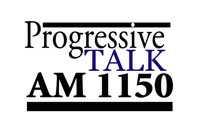Tuesday, July 19, 2005
What Does It Take To Legally Kill A Black Man In America?
Not much, apparently:
ST. LOUIS, July 18 - The corner of Sarah and Olive looks almost nothing as it did 25 years ago when a 19-year-old drug dealer named Quintin Moss was gunned down from a slow-moving car. The boarded-up houses have been replaced by a new townhouse development marked by sleek stone gates; the drug dealers and prostitutes are gone. And the man convicted of the killing, Larry Griffin, was executed 10 years ago. Yet the city's top prosecutor has decided to re-investigate the murder as if it just happened, out of new concerns that the wrong man may have been put to death for the crime. [...] At Larry Griffin's trial a year later, the only eyewitness testimony came from Robert Fitzgerald, a career criminal from Boston and an admitted drug addict who was in St. Louis in the federal witness protection program. Mr. Fitzgerald said he and a friend had heard the shots from behind the hood of a car while replacing a battery. Mr. Fitzgerald testified that he had a good view of the gunmen and memorized the license plate. He identified Larry Griffin in a lineup of photographs at the police station and later identified the abandoned car. On June 26, 1981, exactly a year after the murder, Larry Griffin was convicted. Mr. Fitzgerald, who was then facing felony fraud charges, was cleared and released. After losing several appeals, Mr. Griffin was executed by lethal injection at age 40 in June 1995. But some doubts about Mr. Fitzgerald's testimony were raised in the appeals process. A judge who dissented from a decision that upheld Mr. Griffin's conviction in 1983 noted that Mr. Fitzgerald had "a seriously flawed background, and his ability to observe and identify the gunman was also subject to question." Mr. Fitzgerald changed his account at a hearing in 1993, saying that a detective had shown him only one photograph, declaring, "We happen to know who did it." The NAACP group hired an investigator last summer and tracked down the police officer who had testified that Mr. Fitzgerald was at the scene. The officer, Michael Ruggeri, now retired, said Mr. Fitzgerald was not there when he arrived; he would have recalled, Mr. Ruggeri said, because the Stroll was a black neighborhood, and Mr. Fitzgerald was white. Mr. Ruggeri told investigators that if Mr. Fitzgerald had reported a license plate number, it would have been noted on the police report. The investigators also tracked down the man shot by the stray bullet, Wallace Conners. This time, Mr. Conners said that he had seen the gunmen, that Larry Griffin was not among them and that no white man had been on the scene. Patricia Moss Mason, the victim's sister, told the investigators that she had watched the shooting from a nearby window and had not seen any white man either. Mr. Fitzgerald died last year before investigators could talk to him. "Fitzgerald was the entire case and now there's very strong eyewitness evidence that Fitzgerald was not there, and what's more, Larry Griffin was not there," said Samuel Gross, a law professor at the University of Michigan who oversaw the NAACP group's investigation. Mr. Fitzgerald, he said, had been "deeply motivated to please the police." "It's hard to imagine why the victim's sister, a man who was shot at the same time himself, and a police officer - who live in three different states at this point and were interviewed separately - would all say, 'Actually, he wasn't there,' " Mr. Gross said. The report suggests that three men, all now in prison without chance of parole, were the real killers: Ronnie Thomas-Bey, who owned the car and was arrested but released for lack of evidence in the case; Reggie Griffin; and Ronnie Parker, a drug dealer who ran in the same crowd.
More blogs about politics.






